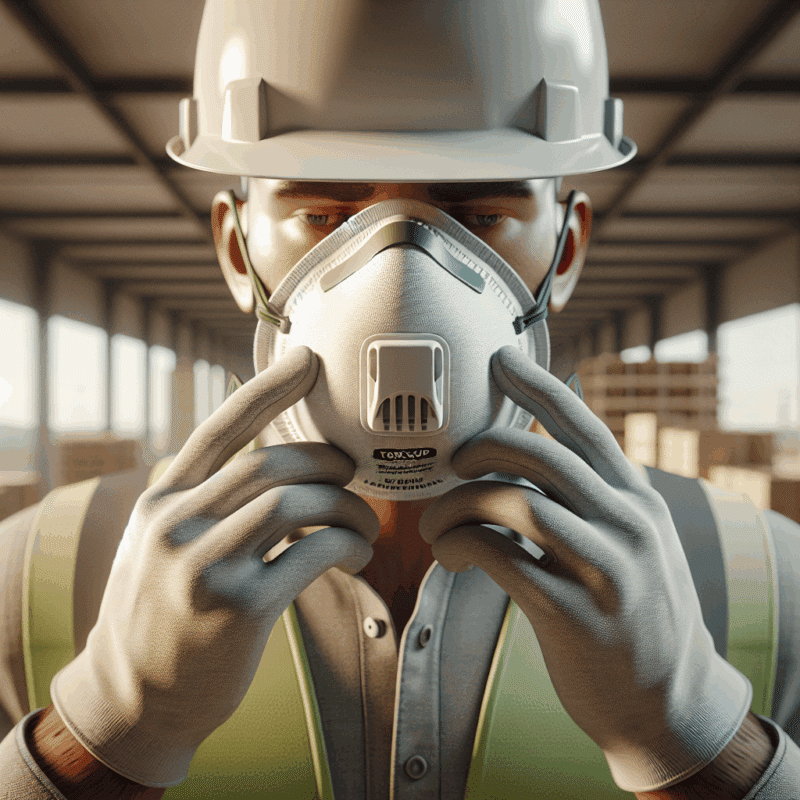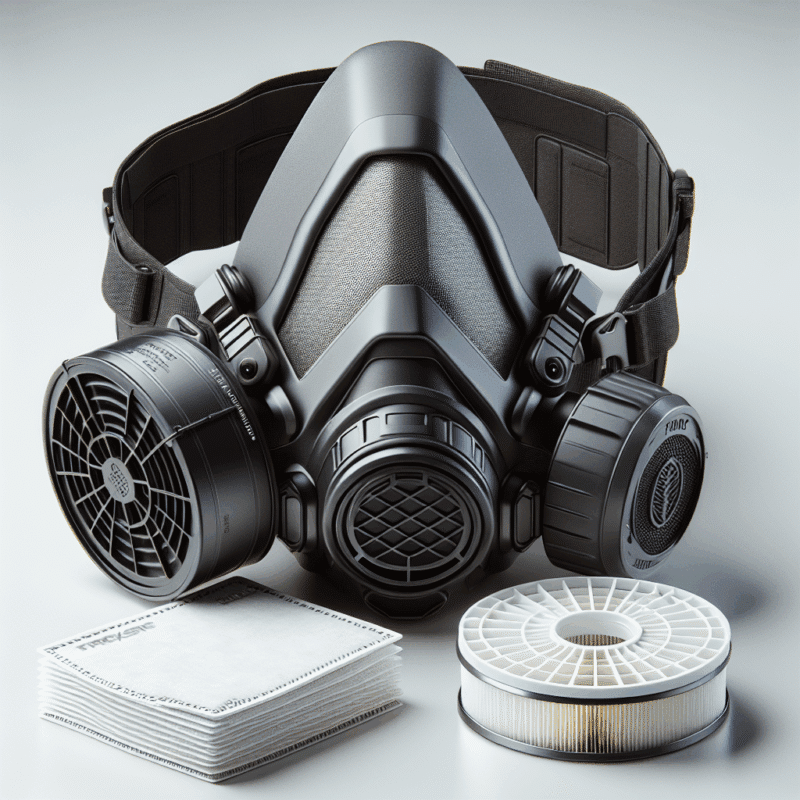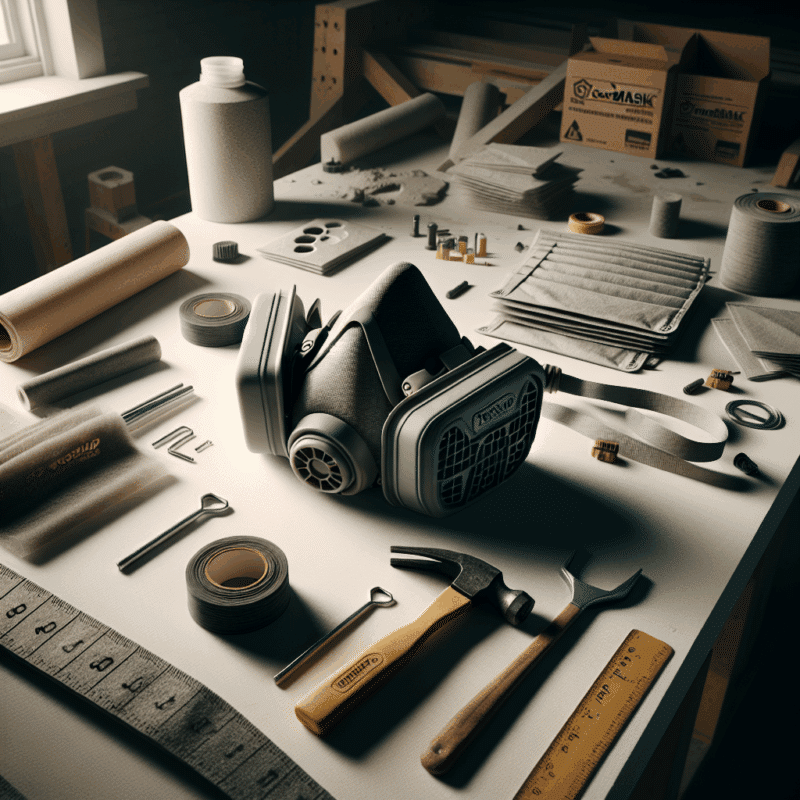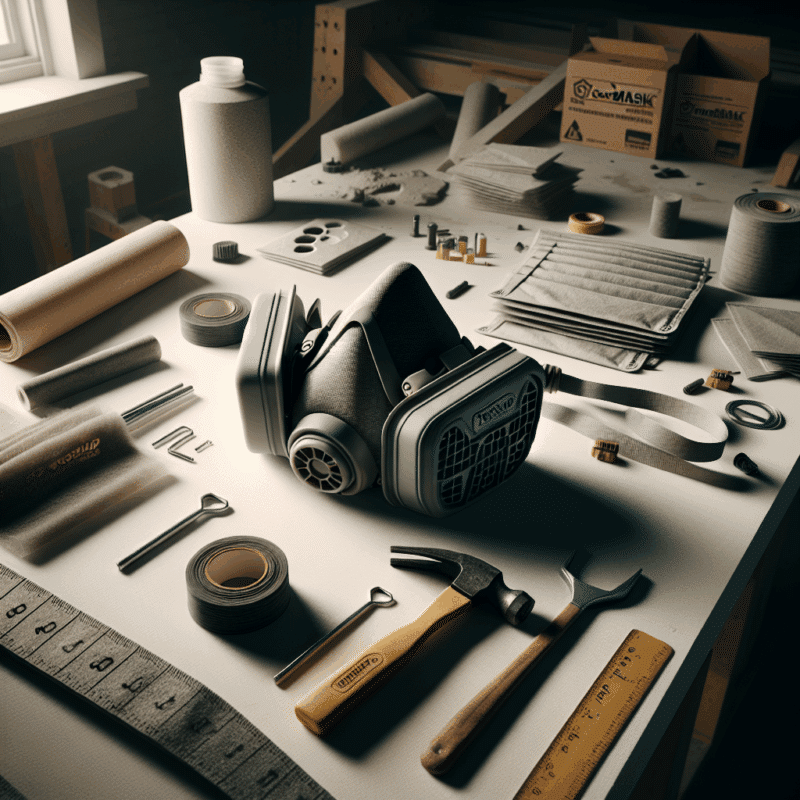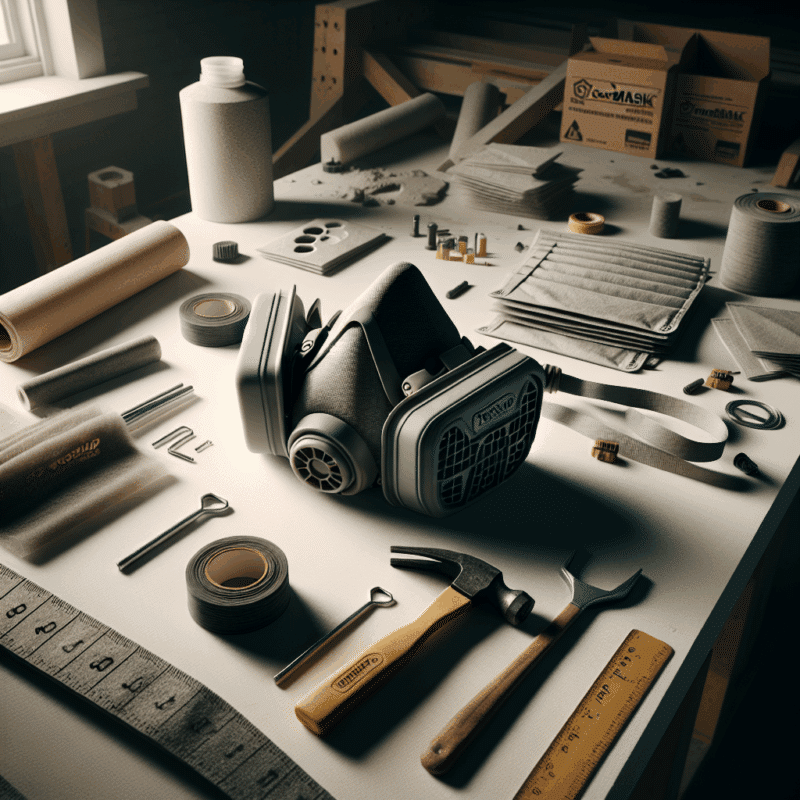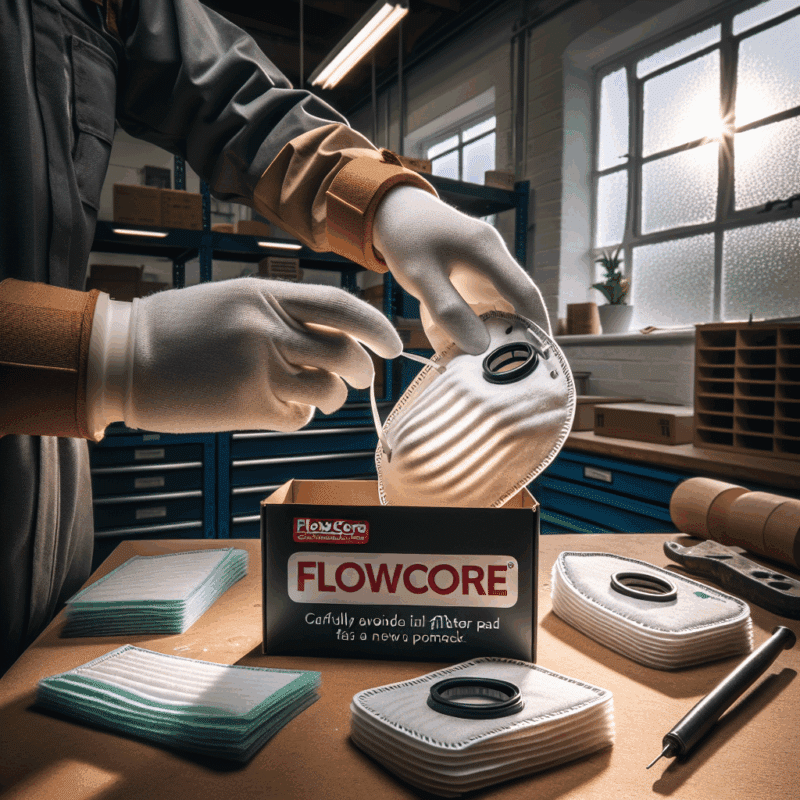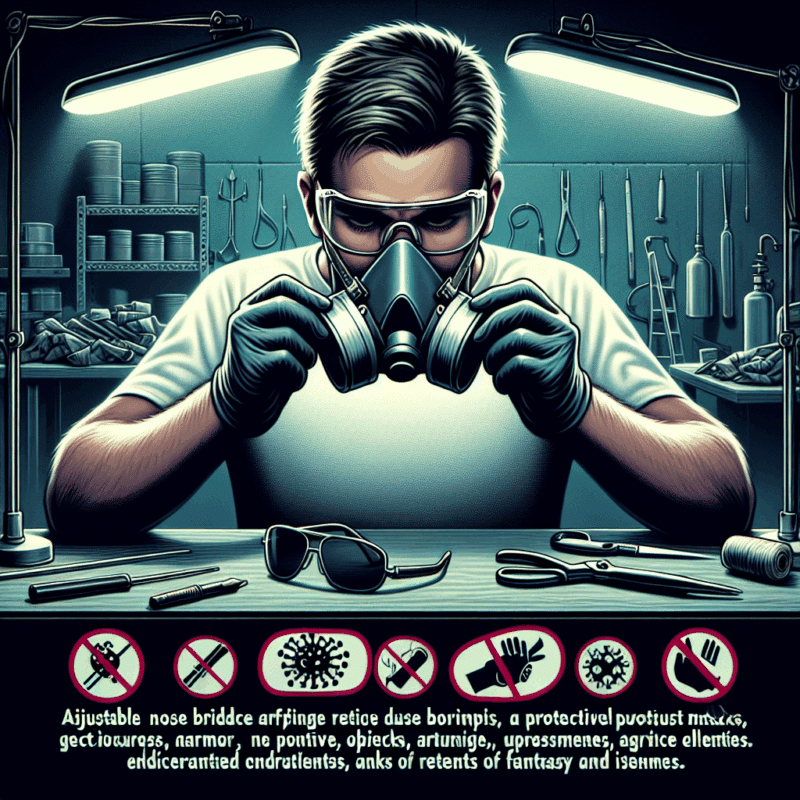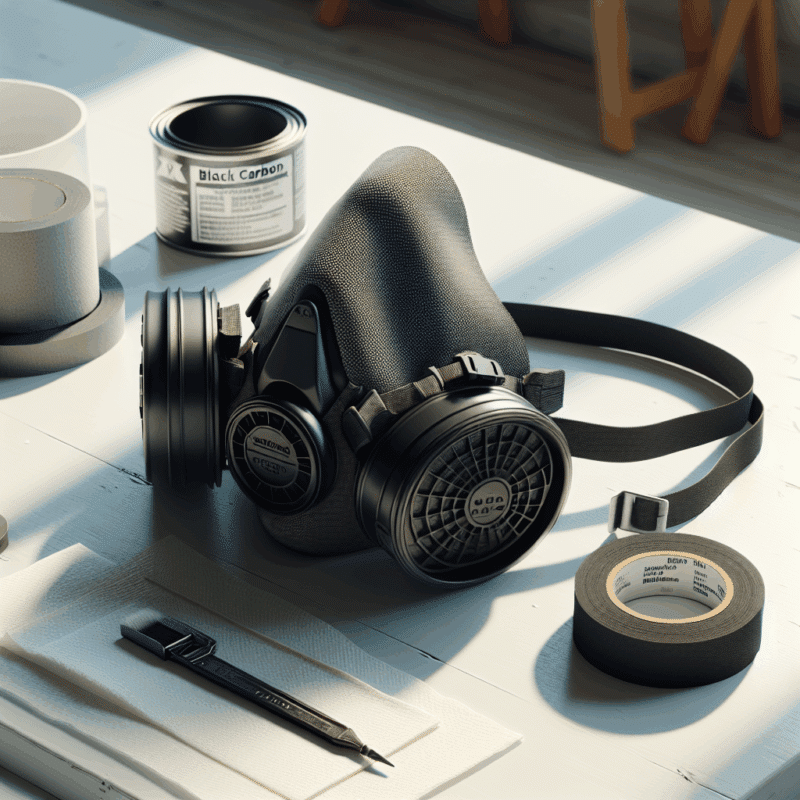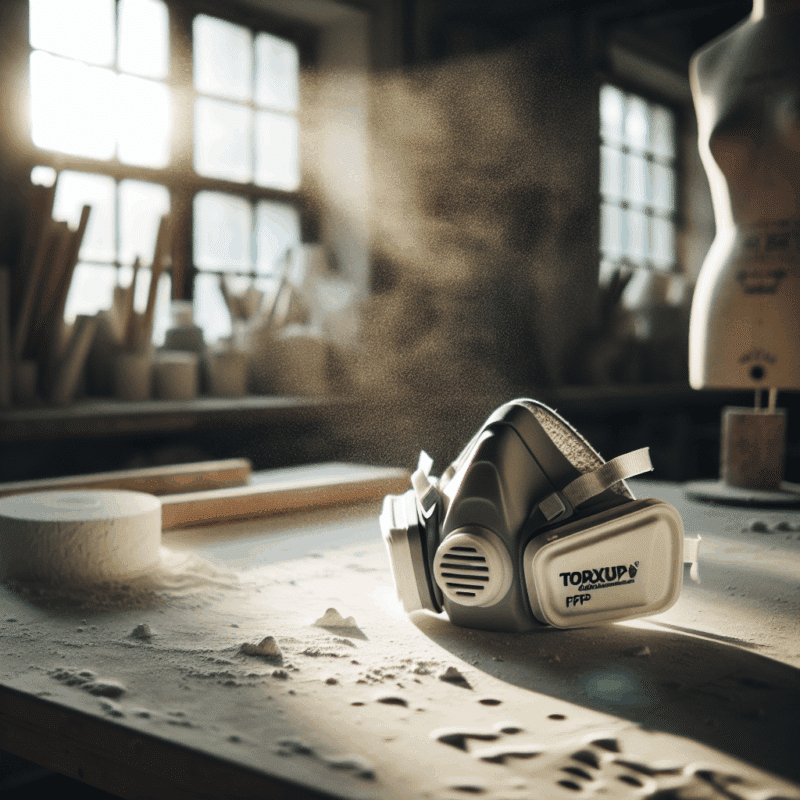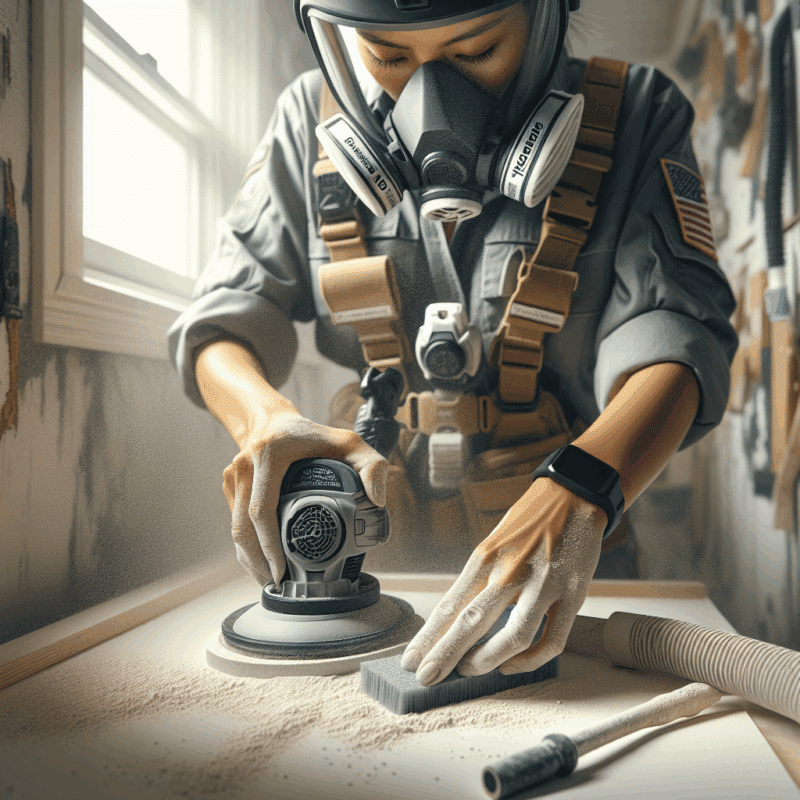Which Respirator for Resin Fumes at Home? Torxup CoreMask Guide
In This Article
- Always wear a certified resin fumes mask with A2 or A2P3 filters for safe home usage.
- The Torxup CoreMask offers outstanding protection, comfort, and modular compatibility for various resin applications.
- Half-face respirators are more convenient, but full-face models offer comprehensive facial protection.
- Filter maintenance is crucial—replace them regularly and store them properly when not in use.
- Safety is multi-dimensional—always pair your mask usage with gloves, ventilation and correct procedure.
Why Resin Fumes Require Serious Protection
Understanding Resin Fume Hazards
When working with resin, you are exposing yourself to volatile organic compounds (VOCs), which are released during the curing process. If inhaled without proper protection, these VOCs can cause short-term irritation like headaches, dizziness or throat discomfort. However, the long-term effects are more serious—chronic exposure can result in damage to the nervous system, respiratory illness, and even liver or kidney dysfunction over time. A resin fumes mask is therefore vital to act as your first line of defence. Resin fumes may not always be visible or strongly odorous, but that doesn’t mean they are harmless. In fact, low-odour does not equate to low-toxicity.
Whether you’re a hobbyist making coasters or a professional pouring river tables, protecting your lungs should never be optional. Using a resin fumes mask rated specifically to block fine particulates and vapours helps ensure your workspace remains a safe and sustaining environment. Unfortunately, a standard dust mask or surgical covering is extremely inadequate for resin usage. These act only as barriers to large particles, leaving you fully exposed to harmful vapours and VOCs. To protect yourself thoroughly, a proper respirator equipped with suitable filters must be worn at all times during resin handling and curing.

Types of Respirators for Resin Work at Home
Comparison of Half-Face vs Full-Face Respirators
Knowing which respirator type to choose for home resin work is critical. Generally, respirators fall into two broad categories: half-face and full-face. A half-face respirator covers only the nose and mouth area and requires a tight seal to be effective. Lightweight and less intrusive, half-masks are a popular choice among home users due to their relatively lower cost and compatibility with eyewear or face shields. Used in tandem with the right A2 or P3 filters, they offer strong protection against vapours and particulates.
Full-face respirators, by contrast, provide coverage for the entire face, including eyes. This eliminates the need for supplementary eye protection while enhancing overall protection—with less risk of inhaling or absorbing fumes via the mucus membranes around the eyes. However, they are bulkier, more expensive, and can impair visibility or restrict movement slightly. For occasional home use, a half-mask respirator with combination filters (like those used in the Torxup CoreMask system) is generally sufficient, although those working in confined or poorly ventilated garage workshops may prefer the full-face option for added peace of mind.
“A quality resin fumes mask is the smartest investment you’ll make in your long-term respiratory health. Never compromise when chemicals are involved.” — Health & Safety Executive (HSE) Advisor
The Role of Filters: A2 vs P3 for Resin Safety
When choosing a respirator for resin work, it’s not just about the mask itself—but what kind of filter media is attached to it. A2 filters are designed to capture organic vapours, including the VOCs released by most common epoxy and polyester resins. These filters use activated carbon to trap harmful substances before they enter your lungs. On the other hand, P3 filters are particle filters capable of catching very fine particulates and resin dust, often needed when sanding or polishing cured resin.
For comprehensive protection, many manufacturers recommend using a dual-filter system that incorporates both A2 and P3 functionality. The Torxup CoreMask, for instance, uses modular filters that combine vapour blocking and particulate protection in one unit. When working with resin indoors, this dual-action is non-negotiable. You may not always be sanding, but resin droplets suspended in the air during pouring can settle in your lungs just as easily. The rule of thumb is: If you can smell it, you’re inhaling it—and if you’re inhaling it, filters are a must.
Why Carbon Filters Are Critical for VOCs
Activated carbon filters, such as those in A2 cartridges, are essential in any effective resin fumes mask. These filters work through a process known as adsorption: chemical vapours adhere to the carbon granules as air passes through the filter. This technology is particularly efficient at trapping VOCs—like benzene, toluene, and styrene—all frequently present in home resin kits.
Not all carbon filters are created equal. Many cheap masks flooding online marketplaces claim to offer resin protection, but in reality, their carbon densities are too low to effectively filter toxins over any appreciable period. Torxup’s CoreMask, by contrast, uses professionally certified A2 filters that meet EN 14387 standards. This ensures consistent and comprehensive purification of your breathing air. For serious resin artisans, investing in the right grade of activated carbon filtration isn’t just precautionary—it’s imperative.
Is the Torxup CoreMask Right for Your DIY Projects?
The Torxup CoreMask may appear to be just one of many options, but its specialised construction sets it apart for home resin users. Its ergonomic design enhances face-seal integrity, minimising gaps that can allow VOC leakage. The adjustable straps allow a custom fit across various head sizes, which is a critical but often overlooked feature.
More importantly, Torxup’s cartridge system allows easy switching between A2 vapour filters and combined A2P3 filters, depending on your specific activity—be it pouring, sanding, or mixing pigment additives. The mask’s silicone body resists degradation from harsh chemicals and can be easily cleaned after sessions. If you regularly embark on DIY resin projects, from table-making to keychains, the CoreMask offers professional-grade protection with home-user compatibility. To see how it compares to other models, check Learn more about Home Respiratory Protection for DIY and Craft for a complete breakdown.
How to Know If Your Resin Mask Fits Properly
One of the most common mistakes home users make is assuming their resin fumes mask fits properly when in fact, it doesn’t. A poor seal renders even the highest-grade filters ineffective. To test fit, perform a simple positive and negative pressure seal test. For a positive test, cover the exhalation valve and exhale gently. Air should push against the mask and not escape. For a negative test, block the filter inlets and inhale—your mask should collapse slightly without external air entering.
Signs of improper fit include noticeable smell leakage, fogging eyewear, slipping straps, or pressure points on your face. The Torxup CoreMask includes soft contouring edges and textured surfaces for non-slip fittings. Make sure to adjust all strap anchors symmetrically and periodically re-check your seal, especially if you’re switching filter types or working in high-intensity workshop sessions. Filter usability can be further enhanced by ensuring you follow the brand’s sizing guide. If in doubt, consult Read a related article to find your perfect fit.
Maintaining Respiratory Protection: Filter Replacement FAQs
Even the best resin fumes mask becomes ineffective if the filters are expired or clogged. Most A2 and P3 cartridges have a lifespan measured in hours of use, not weeks. General guidance is to replace your filters after 20-30 hours of active exposure, although this can vary based on resin intensity, humidity, and temperature. A tell-tale sign it’s time to change filters is when you start noticing the resin odour even while wearing the mask.
Keep track of usage time and always date your filters upon installation. The Torxup CoreMask system has colour-coded indicators and end-of-life markers on some filter models, helping users determine when to dispose of and replace. Filters should never be stored in open air when not in use. Always seal them in an airtight bag or container to prolong their efficacy. For in-depth filtration replacement scheduling and guidelines, review the manufacturer’s data sheets found at Respirator advice for working with resin fumes.
User Review Round-Up: Real Feedback on CoreMask
User feedback on the Torxup CoreMask across artist forums, DIY forums, and creator YouTube channels is overwhelmingly positive. Most users praise its comfort during extended use sessions, especially those handling large resin pours or finishing work involving sanding and polishing. A craft jewellery maker remarked that it was “the first mask I’ve worn that didn’t fog up my glasses or make me feel claustrophobic.”
Others have noted the responsive customer support and availability of replacement parts as strong plus points. While a few beginners mentioned a short learning curve for strap adjustment and filter installation, most agreed that Torxup’s included manual and video tutorials made the process easier. For a detailed user video demo and unboxing analysis, check out Automate product translations across Europe.
DIY Safety Essentials Beyond the Mask
While a proper resin fumes mask is non-negotiable, it should be part of a broader DIY safety protocol. Always ensure your workspace is well ventilated—open windows, use fans, and consider an extractor system. Wear nitrile gloves to protect your skin from sensitising agents, and use eye protection if you’re not employing a full-face mask.
Keep an eye on curing times and avoid staying in the room longer than necessary during that process. Use resin in small amounts and follow manufacturer guidelines strictly. Safety data sheets (SDS) should be consulted before any material usage. Most importantly, never assume that once a project is complete, exposure ends there. Resin fumes continue during curing, so your mask may still be needed post-pour for several hours.
Final Word: Choose Smart Protection for Resin Fumes
[CONCLUSION_CONTENT]
Great guide on which-respirator-for-resin-fumes-at-home-torxup-coremask – Community Feedback
What type of respirator do I need for resin fumes at home?
For resin fumes, use a half-face or full-face respirator with organic vapour (A2 or P3) filters to block harmful VOCs and fine particles.
Are disposable dust masks enough for resin work?
No, disposable dust masks do not filter organic vapours. Use a quality respirator with suitable carbon filters when working with resin.
Can I use the Torxup CoreMask for epoxy resin fumes?
Yes, the Torxup CoreMask with appropriate carbon or organic vapour filters offers effective protection against epoxy resin fumes at home.


